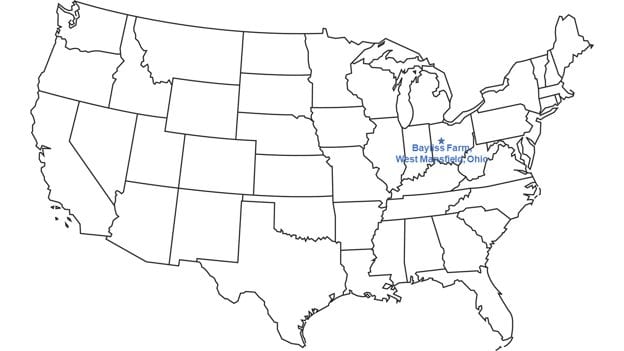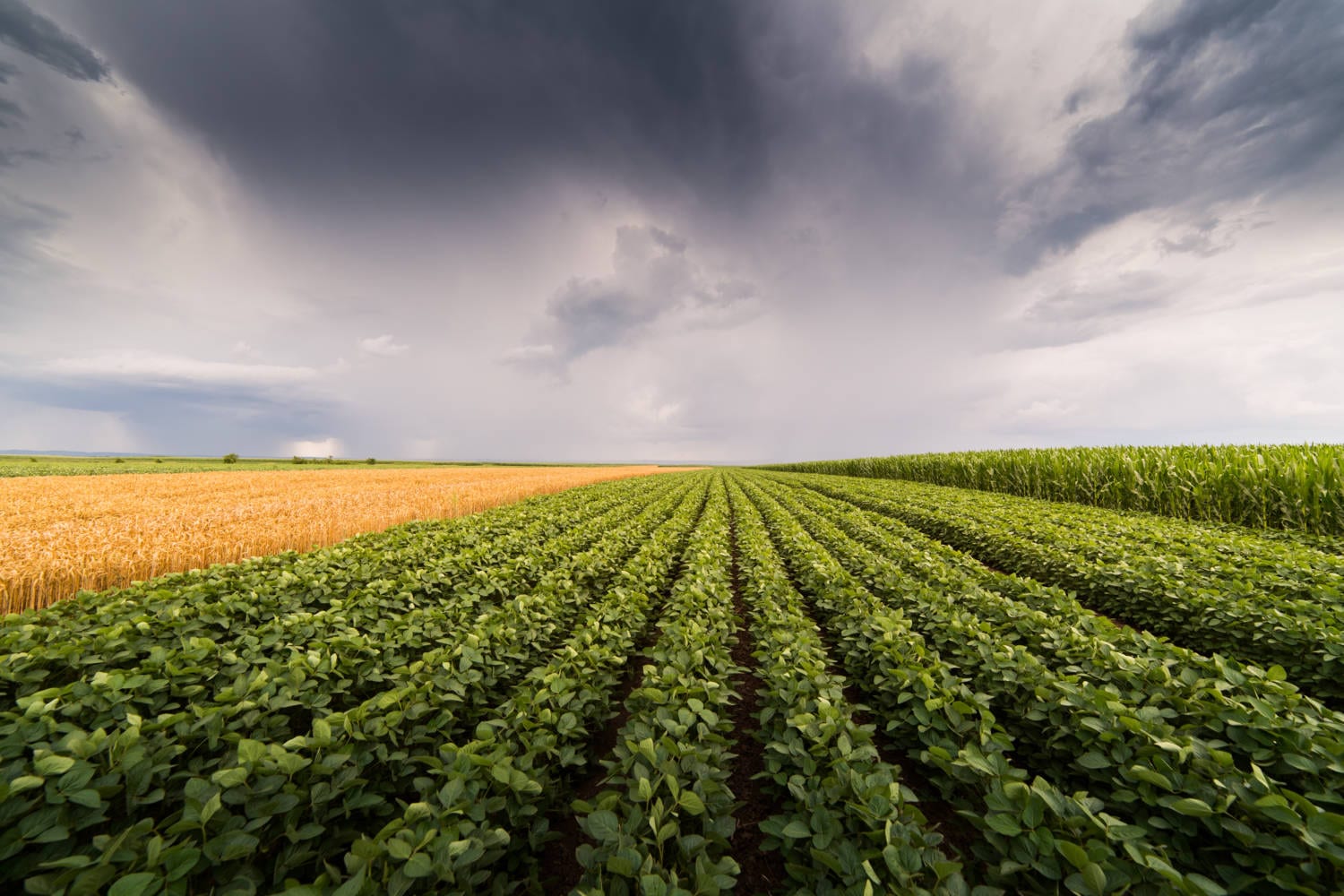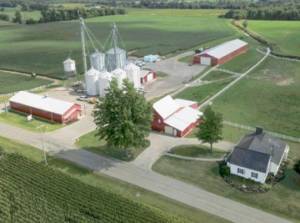 Remember how a consistent pattern of rains this spring caused us to wait to plant our crops? I hardly do. Now we are waiting for rain.
Remember how a consistent pattern of rains this spring caused us to wait to plant our crops? I hardly do. Now we are waiting for rain.
We are now in a pattern where even if it rains in areas around us, it doesn’t rain here in our immediate area of Ohio, in the eastern U.S. Midwest. Our crops are now very dry and starting to be stunted. And the weather forecast isn’t promising.
For example, we finally received our food-grade research soybeans from Argentina in mid-June. We planted them right away, in the best field conditions we had all spring. The soybeans emerged in just four or five days. But after growing a few inches, they stopped, waiting for moisture to help them keep progressing.
All our other soybeans and corn need rain, as well. And once we get rain, our alfalfa will start growing again so we can do a second cutting of hay.
But while we wait for rain, we’ve had other work to do.
We harvested our winter wheat in early July, and the yields were better than we expected. That was encouraging. After the wheat was combined, we baled the wheat straw into square bales. My son-in-law David uses some of that straw as bedding for his cattle, and we sell the rest of it.
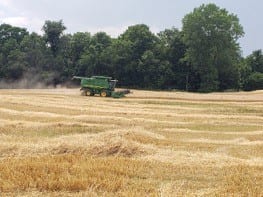 We have also been repairing damaged drainage tile in our fields. Our subsurface drainage has been in place for about 100 years. It consists of big, red clay tiles that were manufactured locally. These tiles, which look like clay tubes, were placed in trenches either 45 cm or 90 cm, or 18 inches or 3 feet, deep, dug by hand.
We have also been repairing damaged drainage tile in our fields. Our subsurface drainage has been in place for about 100 years. It consists of big, red clay tiles that were manufactured locally. These tiles, which look like clay tubes, were placed in trenches either 45 cm or 90 cm, or 18 inches or 3 feet, deep, dug by hand.
One of my landlords says that the original tile was the lower-quality pieces from the local manufacturer with slight imperfections or cracks – chosen to save money. Over time, those original imperfections have developed into cracks that can break and cave in, filling the tile with dirt. That creates a hole in the field. In fact, I broke an axel on a mower with one of them this season.
When we find these holes in the field, we mark them to repair when we have time and conditions allow, like now. If the broken tile is just 45 cm, or 18 inches, deep, we dig it out by hand. If the broken tile is 90 cm, or 3 feet, deep, we ask our neighbor to dig it up with his backhoe. In both cases, we pull out the damaged tile and clean out the neighboring tiles as much as possible. We shine a flashlight up and down the tube to note any other nearby spots that need repairing while we are there. Then we replace the damaged clay tile with plastic tubing, sealing it to fit into the older tiles on either side. It’s important to repair it correctly so the damaged spot doesn’t wash out again.
Our tiles follow the natural watershed flow of our land, with main tiles in the low areas where water is most likely to run. This subsoil drainage supports soil health and crop growth and helps minimize erosion. This is one way we improve our fields.
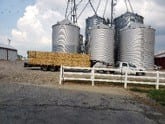
We have also been hauling our corn and soybeans grown last season to our customers. We take our soybeans to a local elevator, a storage facility that aggregates grain from farmers throughout an area and sells it to the next link in the supply chain, either for processing or export. Unfortunately, this elevator will close this winter due to consolidation. Next year we are more likely to take soybeans to a facility about 65 km, or 40 miles, away. We haul our corn to a local egg farm, where they grind it to feed their laying hens.
We have also been repairing and cleaning machinery and preparing it for fall. We celebrated graduation for one of my granddaughters. We are also enjoying local county fairs, where my daughter and grandchildren will show lambs. County fairs are a local traditional across the rural U.S., where we show off the best of our livestock, enjoy competitions from tractor pulls to baking, bring in local entertainment or carnivals, and enjoy great food. This year, our Ohio State Fair and another outdoor farm show have been cancelled due to COVID-19. County fairs draw smaller, local crowds compared to those larger, state- or region-wide events. Our local county fairs provide a bit of normalcy in what is a very different year.
And we continue to wait for much-needed rain.
